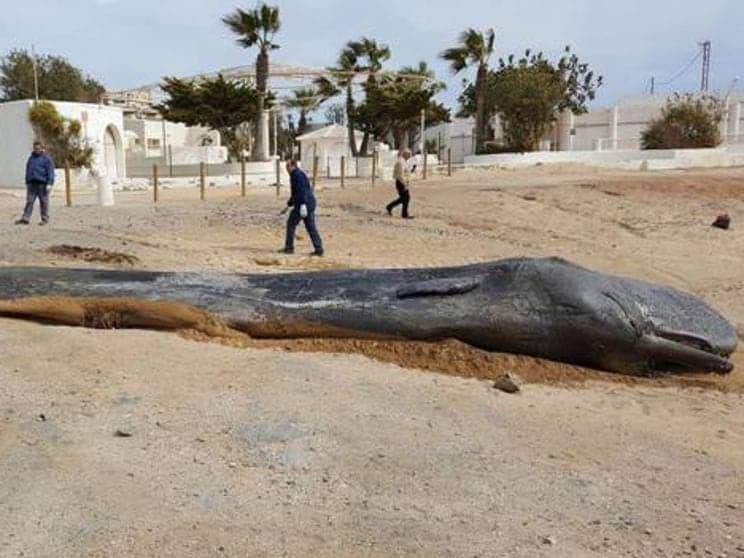Have you ever wondered where your plastic ends up? The words “inside a young male sperm whale that was found dead off the coast of Spain” probably don’t pop to mind but this is, once again, a dire reminder that our pollution has a great price — and that price is often paid by wildlife.

The sperm whale washed off the Murcia coast in Spain in February. Biologists have recently carried out an autopsy on the whale, and among other things, they’ve discovered plastic bags, a jerry can, several pieces of rope and net, and even a drum. The amount of human trash was enormous, reaching about 30 kilograms (66 pounds). As the experts from the El Valle Wildlife Recovery Center confirmed, the plastic itself killed the whale — the unfortunate creature simply ingested too much plastic and couldn’t expel it. It appears that the plastic caused a blockage in the whale’s digestive system which led to an infection that ultimately proved fatal.
The case triggered a national awareness campaign against single-use plastic, which often ends up in our oceans, and inside unfortunate creatures like this sperm whale.
“The presence of plastics in seas and oceans is one of the greatest threats to the conservation of wildlife throughout the world, since many animals are trapped in the trash or ingest large amounts of plastics that end up causing their death,” said Consuelo Rosauro, director-general of the natural environment in the Murcian government.
“The region of Murcia is no stranger to this problem, which we must tackle through clean-up actions and, above all, citizen awareness.”
In the grand scheme of things, this should come as no surprise — we know there is already an ungodly amount of plastic in the oceans. A previous study found that there are over 5 trillion plastic pieces in the ocean, leading the ocean floor to become a plastic cemetery. With 8 million tons of plastic ending up in the ocean every year, researchers expect that by 2050, there will be more plastic than fish in the oceans.
While scientists are unsure exactly how much harm this plastic is causing, more and more evidence suggests that wildlife is greatly suffering and there are myriad examples of whales washing up on the beach with stomachs full of plastic. Birds, turtles, fish — nothing is spared from the ever-growing mountain of plastic. But there are some reasons for optimism.
In England, a $0.05 tax on plastic bags caused a massive drop in plastic bag usage, and elsewhere in the world, similar results are being observed. There are ways to reduce our plastic usage, but it requires strong, systematic efforts in all layers of society. Policymakers, corporations, and us, the citizens, all need to play our part.






